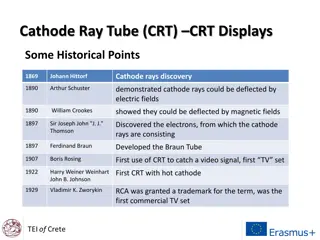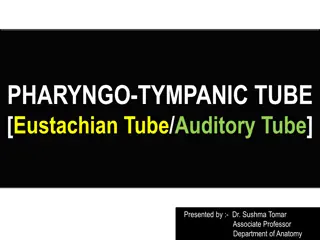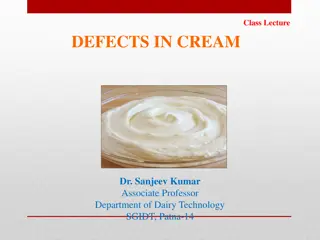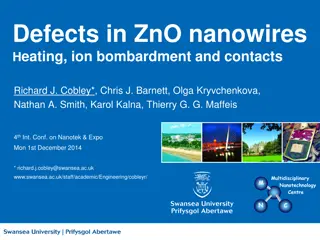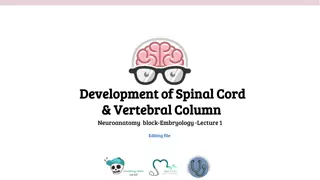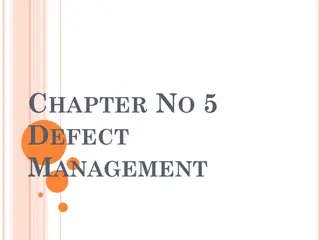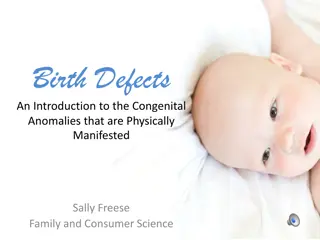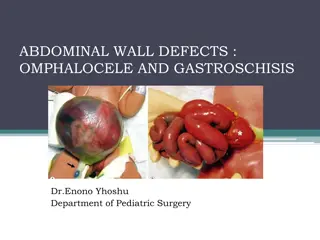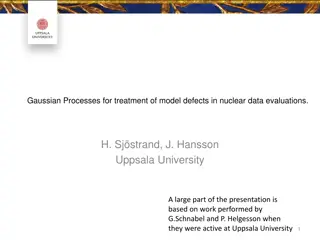Neural Tube Defects: Overview and Management
Neural tube defects are neurological disorders affecting the spinal cord, including conditions like spina bifida. Learn about symptoms, diagnosis, treatment, and prevention options for these disorders.
Download Presentation

Please find below an Image/Link to download the presentation.
The content on the website is provided AS IS for your information and personal use only. It may not be sold, licensed, or shared on other websites without obtaining consent from the author.If you encounter any issues during the download, it is possible that the publisher has removed the file from their server.
You are allowed to download the files provided on this website for personal or commercial use, subject to the condition that they are used lawfully. All files are the property of their respective owners.
The content on the website is provided AS IS for your information and personal use only. It may not be sold, licensed, or shared on other websites without obtaining consent from the author.
E N D
Presentation Transcript
StudyMafia.Org Neural Tube Defects Submitted To: Submitted By: Studymafia.org Studymafia.org
Table Contents Definition Introduction Symptoms of Neural Tube Defects Diagnosis of Neural Tube Defects Types of Neural Tube Defects Treatment of Neural Tube Defects Prevention of Neural Tube Defects Conclusion 2
Definition Neural tube defects, also known as spinal dysraphisms, are a category of neurological disorders related to malformations of the spinal cord, such as spina bifida, anencephaly, meningocele, myelomeningocele and tethered spinal cord syndrome. 3
Introduction Neural tube defects can affect bones of the spine, the spinal cord or the nerve roots that extend from the spine into the body. The cause is not clear but may be related to genetics, maternal nutrition (including folic acid deficiency) during pregnancy or other factors. Spina bifida is the most common neural tube defect, affecting approximately one out of every 1,000 newborns. In some situations, surgery may address these defects and their symptoms. 4
Diagnosis of Neural Tube Defects Neural tube defects result from the beginnings of the embryo s nervous system (the neural tube) failing to close completely before birth. The neural tube forms very early in embryonic development just one month after conception, sometimes before the mother knows she is pregnant. 6
Diagnosis of Neural Tube Defects It starts as a flat, ribbon-like structure that rolls together, lengthwise, to form the tube that will normally grow into the brain and spinal cord. If the seam of the neural tube does not close correctly, portions of the spine, the covering of the spinal cord (meninges) or the cord itself can push outside of the back as the fetus grows. 7
Diagnosis of Neural Tube Defects If a child is born with a neural tube defect, such as spina bifida, a thorough evaluation by a pediatric neurosurgeon can help determine the best treatment option. Your child s doctor will conduct a thorough physical, ask for a detailed family and patient history and may order imaging of the spine using an MRI or ultrasound scan. 8
Types of Neural Tube Defects Spina bifida. This is when the spine doesn t grow normally over the spinal cord. Babies born with spina bifida may have minor or short-term problems. Or they may have lasting, serious physical problems. These may include paralysis, lack of bowel and bladder control, club feet, a buildup of spinal fluid in the head (hydrocephaly), and intellectual disability. In most cases, a child may need one or more surgeries after birth. This is the most common kind of ONTD. 9
Types of Neural Tube Defects Anencephaly. This defect is when part of the brain and skull don t form. It occurs when the neural tube doesn t close at the base of the skull. Babies with anencephaly often die in the uterus after 20 weeks of pregnancy (stillborn). Or they only live for a very short time after birth. Encephalocele. This is a very rare condition. With this defect, the brain or its coverings poke through the skull. This can occur anywhere from the forehead to the lower back of the skull. 10
Treatment of Neural Tube Defects The ideal treatment approach involves multiple specialties in reviewing the cases of children with neural tube defects, including pediatric neurosurgeons, pediatric neurologists, and pediatric urologists, among others. Surgery for Neural Tube Defects The purpose of surgery is to correct the physical malformation. If the child s spinal cord is exposed to the skin, early surgical repair is essential to prevent infection and neurological deficits. 11
Treatment of Neural Tube Defects In the case of tethered spinal cord syndrome, a pediatric neurosurgeon will perform surgery to release the tether. After surgery, follow-up care is extremely important to monitor the child s recovery. Your pediatric neurosurgeon will schedule follow-up appointments to make sure your child is making progress, and seeing the other specialists is important to your child s overall well-being. 12
Prevention of Neural Tube Defects To help prevent NTDs, take a vitamin supplement that has 400 micrograms of folic acid in it every day, even if you're not trying to get pregnant. If you're at high risk for NTDs, take 4,000 micrograms of folic acid every day. Talk to your provider about how to get this much safely. 13
Conclusion No occurrences of NTD in this national cohort study. Folic acid supplementation in Brazil: Enriched flour and high prevalence of prenatal supplementation in this study Results of this study do not conclusively indicate increased or decreased risk of stillbirth and/or abortion associated with periconception DTG exposure. 15
References Google.com Wikipedia.org Studymafia.org Slidespanda.com
Thanks To StudyMafia.org








